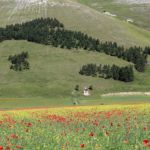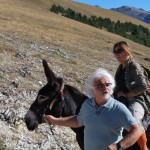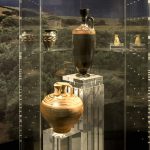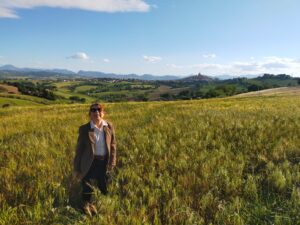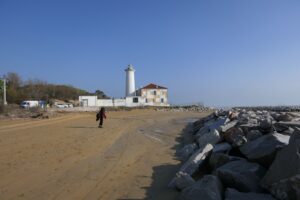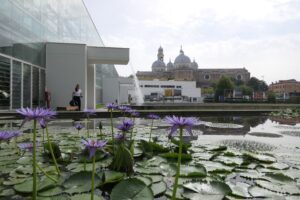Active, food and spiritual tourism in the green heart of Italy
The high quality olive oil from Umbria
A worthy reason to organize a bike tour nearby, from Spoleto to Montefalco
Here is a bike tour on the cycle track from Spoleto to Montefalco, Umbria, the very heart of Italy. It is a great route, properly signposted, with a stunning view on the ring of mountains and many important art cities all along its way.
The local food and cuisine are another worthy reason to pass by. First, the Umbrian olive oil, a high-quality product. The local olive tree is peculiar: a small size plant sprung from a rock soil. One of the most distinctive features is the hand harvesting, combined to a high technological squeeze process. The best ending for this tour is some tasting, learning how to do it the right way.
Video full text: Umbrian olive oil
He’s Daniele, I left Spoleto with him.
He’s an environmental guide and he knows everything about the area’s cycle paths.
From Spoleto, I’m headed for Montefalco. How far is it?
Around 25km. That’s manageable, fine.
You’ll find a lovely climb waiting for you. There are two possibilities.
One is rather steep with gradients of as much as 20%.
Another is a little longer, but it’s kinder.
You can’t say this to a man who sweats!
I think you’ll undoubtedly choose the harder one.
The harder one, but on foot! The cycling-tourist is often more tourist than cyclist
And so goes on foot.
You show tourists around, are there people who travel along these cycle tracks?
Yes, it’s an itinerary that’s becoming somewhat well known.
Many choose to have a guide, but others travel on their own.
The route is fairly well signposted, there’s no chance of going wrong.
Foreign or Italian tourists?
Above all foreign – Dutch, Belgians, Germans.
So why don’t the Italians come? Because it’s hard work?
Yes, I believe that Italians, on average, are lazy.
Perhaps they are misinformed, because in reality it’s beautiful and well worth it!
We are right in the middle of the valley, we can see the whole ring of mountains.
One passes through many of Umbria’s most important cities of art.
Spoleto, Trevi, Montefalco, Bevagne, Assisi…
And there are good things to eat as well!
An entire range of gastronomic stops that I have in my head.
I dedicate my first stop to the famous oil of Umbria.Francesco, tell me about the Umbrian olive tree.
In other parts of Italy, the olive trees are enormous and date back centuries, like in Apulia.
The Umbrian olive tree is small and discreet!
Very small, the moraiolo is a feature of these parts because of its structure.
They are small trees that grow on the rock.
It’s the soil that determines the size of the plant.
I’d imagine that this also applies to the taste of the oil.
The quality of the moraiolo is unquestionable, it’s the main plant in this area that goes from Assisi to Spoleto.
From this drupe we extract oil with very distinctive properties.
Drupe? What’s that?
It’s the fruit from the plant, the berry, the olive itself.
A small Umbrian olive is also convenient. How do you harvest them?
One of our most distinctive features is that we harvest by hand.
It’s actually a “picking” that is done precisely with the hands.
Like this, by brushing one’s hands along the branches.
Every operator has a pouch tied around their neck into which they allow the olives to fall.
Hand “picking” is a movement that resembles milking.
It leaves the olive intact.
A well preserved moraiolo oil, keeps its properties and its aromas for two years, without ever changing.
There is an actual oil culture in this area.
It’s been passed down from one generation to the next, since 1817.
My grandfather’s great-grandfather!
Give me an idea of the numbers involved. How big is your business?
We have 13,000 plants across the most famous area.
The hills of Spoleto, Campello and Trevi.
That means we can produce from 45 to 50 thousand kilos.
Around 50 to 60 thousand bottles a year.
Divided into different niche areas of production, not all one standard or the same.
The harvest is in October, November and December.
The three oils that are gathered in these three months are different.
At first, in October, the olives that are harvested are still green.
The oil has much a more intense aroma and fruitiness.
Gradually, as the fruit ripens, this fruitiness and intensity begins to diminish.
Not that one oil is better than another.
The October oil has better aromas and properties.
But they have different uses.
How do you make this oil? Do you still have the crusher of times-gone-by?
No. The technology is the main thing!
Can you show me what a modern crusher is like these days?
Let’s go!
You need all of this technology to make oil?
We launched the crusher with this technology.
It allows us to extract oil of the highest quality.
This is down to meticulous controls of temperatures and mangling times.
I keep hearing about “cold extraction”. What does that mean?
It means that the entire extraction process is carried out below 27 degrees.
It means the product won’t oxidise.
Are you telling those like me, who are nostalgic for the “good old days”, that technology means better quality?
Undoubtedly.
The oil is heated slightly, then the first thing to do is to smell.
This has to be followed immediately by inhaling a small quantity of the oil inside the mouth?
I taste it with the tongue?
The small quantity then has to be inhaled, the so-called “stripping”
Am I doing it right?
You will get a bitter, piquant taste in the throat, synonymous with high quality.
In order for this to be of any worth, it mustn’t be long lasting,
In-fact, it’s already gone.
The bitterness that envelopes the mouth must disappear immediately, in the space of 30 seconds to a minute.So that one is left with a very clean mouth, so tasty in fact that you begin to lick your lips a little.
And you feel the need to taste it again!
What is the relationship between a typical product like oil and the territory, tourism, the appeal of this place?
We created the holiday farm from the company.
It was a really simple step.
In the nineties, wine and food tourism brought with it a growing demand to stay here and enjoy and taste the different oils, wines, cured meats.
Above all to experience these places.
Consequently, oil and wine have become the driving force behind tourism.

